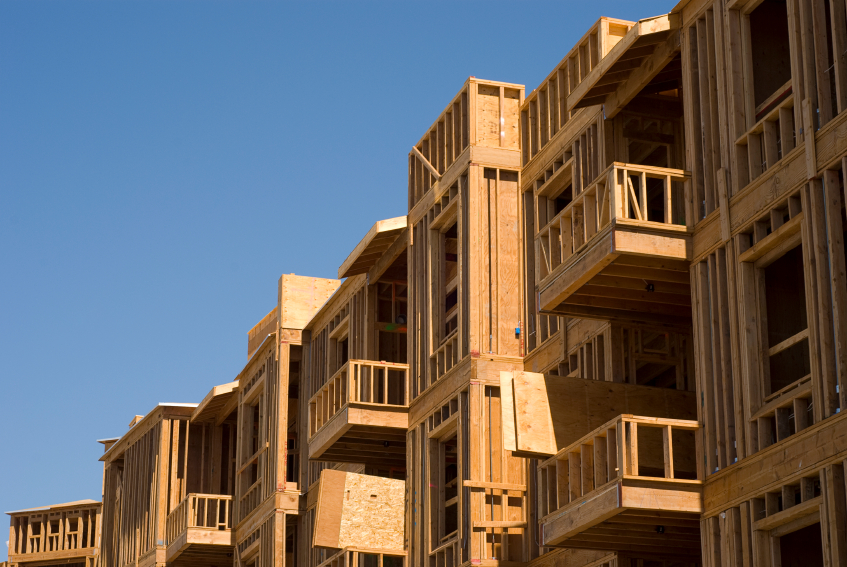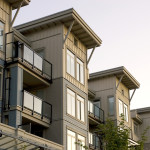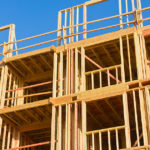
Expected changes to Ontario’s building code could spike wood frame construction. Builders will be allowed to create mid-rise six-storey structures from wood. Currently, they are limited to four storeys. It’s a change that was implemented in British Columbia five years ago, and could soon deliver some major construction advantages in Canada’s most populated province.
The big benefit of wood frame construction is in its cost savings. Where affordability is a concern, wood framed suites sell for as much as 25 per cent less per square foot compared to those in a concrete building. The use of wood framing, and prefabricated wood panels can create significant efficiencies that will allow developers to offer attractively priced, mid-rise units in a competitive market.
Wood construction is also greener. Using wood products will reduce the impact a building has on our climate because it takes a lot less carbon to process wood into useful material than it does to build with concrete. Once a wood structure is up, it will also act as a carbon store, helping keep greenhouse gas emissions out of our atmosphere. The carbon trapped in the lumber will remain trapped for the life the building.
In addition, an increase in wood frame construction will help drive Ontario’s economy. Keeping people employed in the province’s vital forest industry will help ensure growing demand for the homes built by Ontario’s construction professionals.
Right now the provincial government is carrying out a regulatory review of the proposal. Meantime, in B.C., nearly 60 wood buildings are already pushing above four-storeys tall. If you include projects in the planning or construction phase right now, the total number jumps to more than 200. While six-storeys is the limit for traditional construction methods in B.C., there is a push underway to develop a much taller, mass timber structure at the University of British Columbia. It would climb above 16 storeys if it can meet strict exceptions in the B.C. building code.
Critics suggest taller wood structures are putting their occupants at risk. They cite concerns over the potential for fire. Fortunately, those claims of increased death and injury are simply not backed up by reality. A study by the University of the Fraser Valley’s Len Garis and Joseph Clare at the University of Western Australia came to very different conclusions. They examined almost 11,875 residential building fires from October 2008 to October 2013. They found fire safety systems such as alarms and sprinklers are far more important in protecting people, than the materials used in a building’s construction.
Looking to other jurisdictions, Seattle has been allowing wood framed mid-rises, up to six-storeys, for almost two decades with no concerns expressed by their fire officials. The building code changes also proved to increase demand for locally produced wood products, while creating structures with reduced carbon footprints. Ontario is ready for six-storey wood frame construction, and builders should be examining the possibilities that await them when the building code is adjusted next year.



